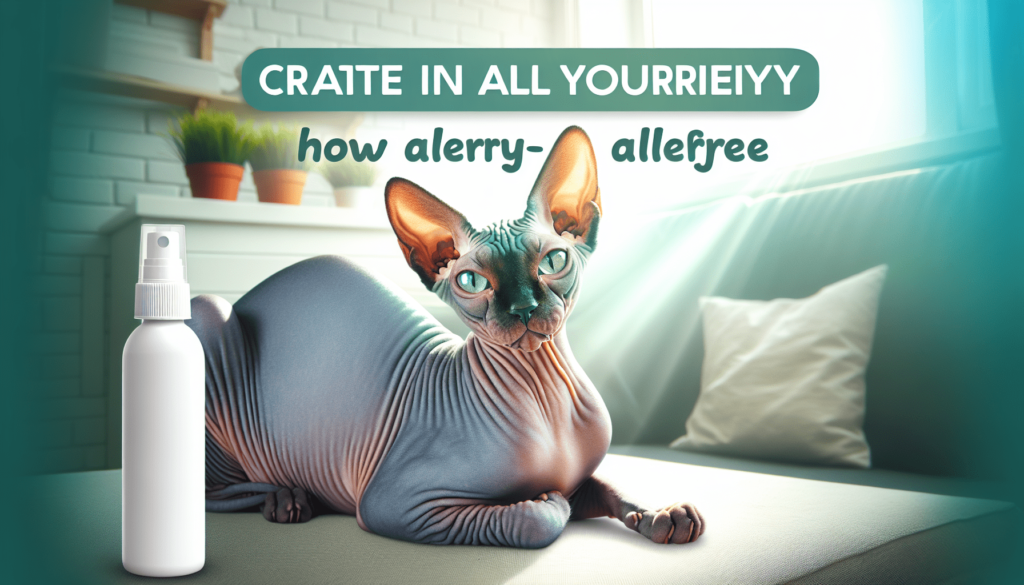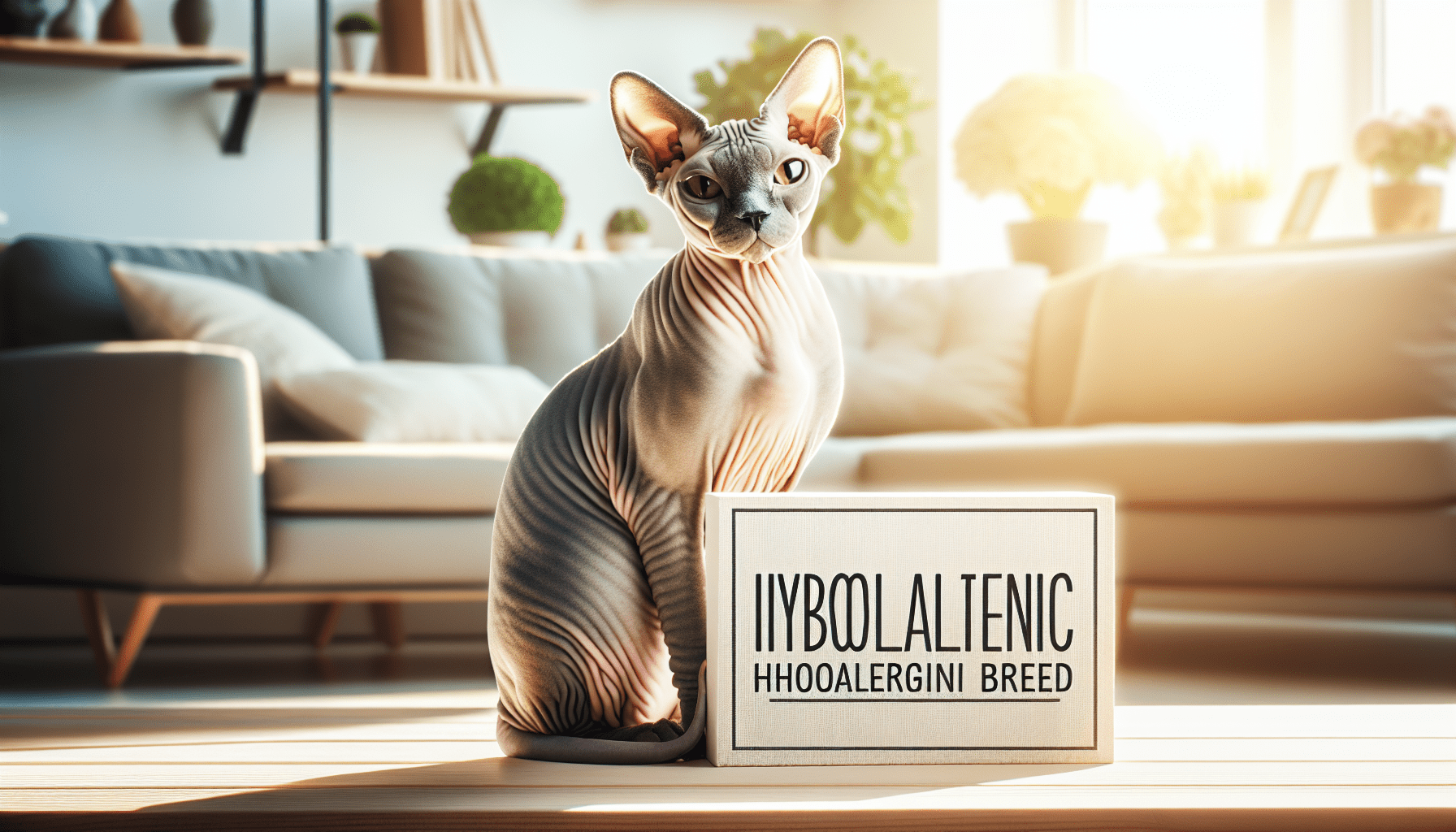Struggling with allergies but dreaming of having a furry friend? “Tips for Selecting a Cat Breed for Allergy Sufferers” guides you in choosing the perfect feline companion without aggravating your symptoms. You’ll discover which breeds are more allergy-friendly and learn how to create a harmonious home where both you and your cat can thrive. Whether you’re a lifelong allergy sufferer or newly sensitized, this article arms you with practical advice to make an informed decision, ensuring a happy and healthy co-existence with your new pet. Have you ever dreamed of having a furry feline friend, but your allergies keep getting in the way? Don’t worry, you’re not alone. Many people love the company of cats but struggle with allergies that make it hard to live with one. If this sounds like you, then the next step is understanding how to choose a cat breed that might make your life a little easier.

Understanding Cat Allergies
Before diving into the tips for selecting a cat breed, it’s helpful to understand what causes cat allergies. Wouldn’t it be great if a little more knowledge could make your life more comfortable?
What Causes Cat Allergies?
You might think it’s the cat hair that triggers your allergies, but it’s actually proteins found in cat saliva, skin cells, and urine. These proteins, mainly Fel d 1, can become airborne and cause allergic reactions. Learning what you’re really allergic to can help you make more informed choices about which breed might suit you best.
How Do Allergens Affect You?
Do your eyes water, or do you start sneezing uncontrollably as soon as you come into contact with a cat? Allergy symptoms can range from mild to severe and include sneezing, itchy eyes, skin rashes, and even difficulty breathing in extreme cases. Knowing how allergens affect you can steer you towards a breed better suited to your specific needs.
The Myth of Hypoallergenic Cats
Have you heard of hypoallergenic cats? You might think they are the answer to your problems. Let’s clear up some misconceptions.
What Does Hypoallergenic Really Mean?
The term “hypoallergenic” is often misunderstood. It doesn’t mean that these cats are allergen-free; it simply means they produce fewer allergens. No cat is completely hypoallergenic, but some breeds cause fewer issues for allergy sufferers. This can be a game-changer for those who still want a feline friend.
Popular Hypoallergenic Breeds
You’re in luck! Some cat breeds are known to produce fewer allergens, which can make living with a cat a lot easier.
| Breed | Characteristics |
|---|---|
| Sphynx | Hairless, requires regular bathing |
| Russian Blue | Thick double coat, less dander |
| Balinese | Long-haired, but low on Fel d 1 |
| Bengal | Short coat, minimal shedding |
| Devon Rex | Soft, curly coat, low shedding |
Considering Your Lifestyle
Let’s talk about your lifestyle. How much time do you have for grooming, and how active do you want your cat to be? These are essential considerations when picking a breed.
Time for Grooming
Do you have time to brush a cat daily, or would you prefer one that requires minimal grooming? Some hypoallergenic breeds like the Sphynx need regular baths, while others, such as the Russian Blue, need less intensive grooming.
Activity Level
Are you looking for a playful cat that matches your active lifestyle, or do you prefer a cuddle buddy? For instance, Bengals are very active and playful, whereas Russian Blues and Balinese are more moderate in their activity levels.
Tips for Reducing Allergens
Once you’ve chosen a breed, there are still many ways to minimize allergens in your home. Let’s dive into those tips now.
Regular Grooming and Bathing
Your cat’s grooming routine can make a big difference in how you manage allergens at home.
Brushing
Even cats that produce fewer allergens can benefit from regular brushing. This can help reduce the amount of dander and loose hair in your home. Always brush in a well-ventilated area or even outside to prevent allergens from spreading indoors.
Bathing
Some hypoallergenic breeds like the Sphynx require regular baths because they accumulate oil on their skin. Bathing your cat can help reduce allergens, but be sure to use pet-safe products and consult your vet before starting a new bathing regimen.
Cleaning Your Home
Keeping your living environment clean is crucial in managing cat allergens. Here are some strategies to keep your home as allergen-free as possible.
Regular Vacuuming
Investing in a good vacuum cleaner with a HEPA filter can make a world of difference. Vacuuming your home frequently can capture those tiny particles of dander that cause allergic reactions.
Dusting and Wiping Surfaces
Regularly dust and wipe down surfaces to remove dander. Use a damp cloth to prevent allergens from becoming airborne.
Air Purifiers
Air purifiers equipped with HEPA filters can effectively trap airborne allergens, making the air in your home cleaner and easier to breathe.

Adopting Adult Cats vs. Kittens
You might be drawn to the idea of adopting a kitten, but adult cats have their benefits too. Let’s explore both options.
The Joys of Kittens
Kittens are undeniably adorable and energetic, but they can also be a handful. They’re more demanding when it comes to time and effort, requiring training and lots of playtime. Kittens can also exacerbate allergies more at first, due to higher levels of grooming.
The Benefits of Adult Cats
Adult cats, on the other hand, are more predictable in terms of personality and behavior. They generally produce less dander than kittens, making them a more low-maintenance option for allergy sufferers.
Breeds to Avoid
While some breeds are better suited for allergy sufferers, others might pose more challenges.
High-Shedding Breeds
Breeds like the Maine Coon, Persian, and Siberian might not be the best choices if you’re trying to manage cat allergens. These breeds shed a lot and can distribute more dander around your home.
Breeds with Thick Undercoats
Cats with thick undercoats, like the British Shorthair or the Chartreux, tend to produce more dander. If you’re sensitive to allergens, it might be best to avoid these breeds.
Consulting an Allergist
If you’re not sure how severe your cat allergies are, consulting an allergist can provide valuable insights.
Allergy Tests
Allergy testing can pinpoint exactly what triggers your symptoms. Knowing whether your allergies are mild, moderate, or severe can help you make the best decision when choosing a cat breed.
Allergy Management Plans
An allergist can also help you develop a plan to manage your allergies. This might include medications, lifestyle changes, or other interventions designed to make living with a cat more comfortable.
Interacting with Different Breeds
One of the best ways to determine which breed is right for you is to spend time with them.
Visiting Breeders
Visit breeders who specialize in hypoallergenic breeds. Spending time with these cats can give you a better idea of how your allergies will react.
Adoption Events
Animal shelters and adoption events also provide opportunities to interact with different breeds. Spend some time petting and holding the cats to see how your body responds.
Health Considerations for Hypoallergenic Breeds
Every cat breed has its own set of health considerations. Here are a few you should be aware of when considering hypoallergenic breeds.
Genetic Conditions
Some breeds are more prone to genetic conditions. For example, the Bengal breed has a higher tendency to develop heart diseases. Always research and ask breeders about the health history of their cats.
Regular Vet Visits
Regardless of the breed, regular vet visits are essential to ensure your cat remains healthy. Keeping your cat in top shape can indirectly help manage the allergen levels in your home.
Building Your Cat-Friendly Home
Now that you’re close to finding the perfect breed, let’s talk about making your home more cat-friendly while managing allergens.
Designated Cat Areas
Creating designated areas for your cat can help contain the allergens. Consider setting up a specific room or corner with your cat’s bed, litter box, and toys. This minimizes the spread of dander to other parts of your home.
Washable Cat Items
Opt for cat beds, blankets, and toys that are machine washable. Regularly washing these items can help keep allergens at bay.
Replace Carpeting
If possible, replace carpeting with hard flooring. Carpets can trap dander and are more challenging to clean thoroughly.
Conclusion
Selecting the right cat breed when you suffer from allergies involves meticulous planning and understanding your own limits. From hypoallergenic breeds to proper grooming and cleaning routines, your dream of having a cat is achievable. Never forget that consulting professionals, like breeders and allergists, can provide you with tailored advice to make your dream a reality.
Wouldn’t it be wonderful to enjoy the companionship of a cat while managing your allergies successfully? With the right steps, you’re well on your way to finding that perfect feline friend.
We hope you found these tips helpful and that you can now move forward in making an informed decision. Living with a cat despite having allergies is definitely possible—after all, who can resist those adorable whiskers?
